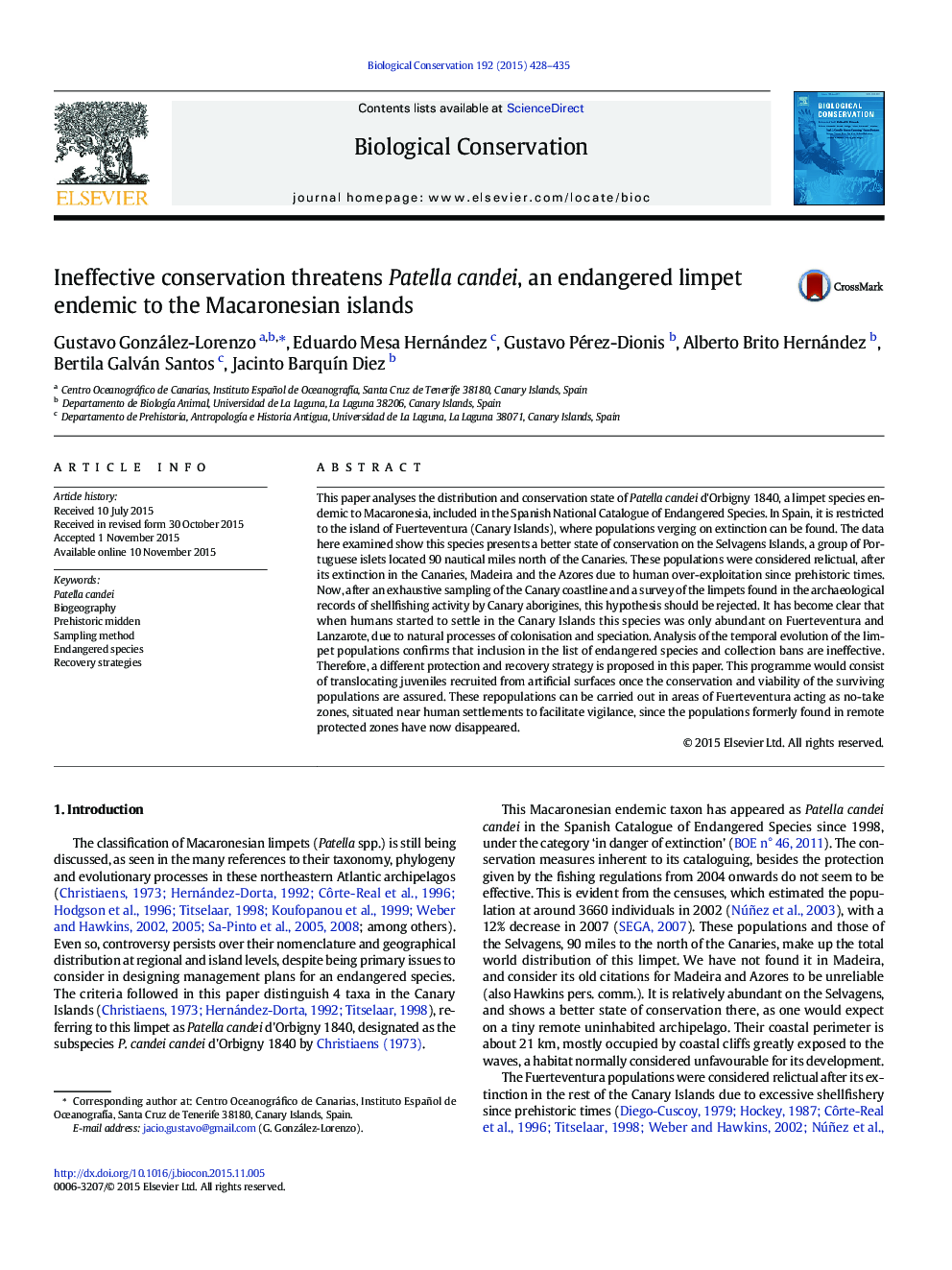| Article ID | Journal | Published Year | Pages | File Type |
|---|---|---|---|---|
| 6298625 | Biological Conservation | 2015 | 8 Pages |
Abstract
This paper analyses the distribution and conservation state of Patella candei d'Orbigny 1840, a limpet species endemic to Macaronesia, included in the Spanish National Catalogue of Endangered Species. In Spain, it is restricted to the island of Fuerteventura (Canary Islands), where populations verging on extinction can be found. The data here examined show this species presents a better state of conservation on the Selvagens Islands, a group of Portuguese islets located 90 nautical miles north of the Canaries. These populations were considered relictual, after its extinction in the Canaries, Madeira and the Azores due to human over-exploitation since prehistoric times. Now, after an exhaustive sampling of the Canary coastline and a survey of the limpets found in the archaeological records of shellfishing activity by Canary aborigines, this hypothesis should be rejected. It has become clear that when humans started to settle in the Canary Islands this species was only abundant on Fuerteventura and Lanzarote, due to natural processes of colonisation and speciation. Analysis of the temporal evolution of the limpet populations confirms that inclusion in the list of endangered species and collection bans are ineffective. Therefore, a different protection and recovery strategy is proposed in this paper. This programme would consist of translocating juveniles recruited from artificial surfaces once the conservation and viability of the surviving populations are assured. These repopulations can be carried out in areas of Fuerteventura acting as no-take zones, situated near human settlements to facilitate vigilance, since the populations formerly found in remote protected zones have now disappeared.
Related Topics
Life Sciences
Agricultural and Biological Sciences
Ecology, Evolution, Behavior and Systematics
Authors
Gustavo González-Lorenzo, Eduardo Mesa Hernández, Gustavo Pérez-Dionis, Alberto Brito Hernández, Bertila Galván Santos, Jacinto BarquÃn Diez,
